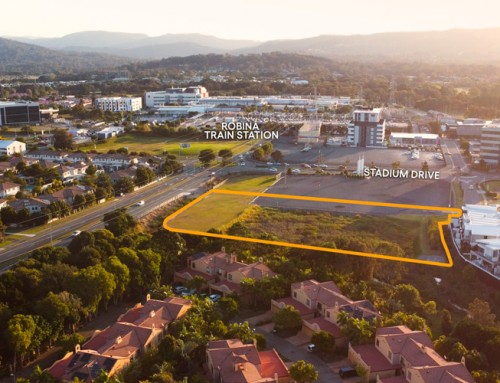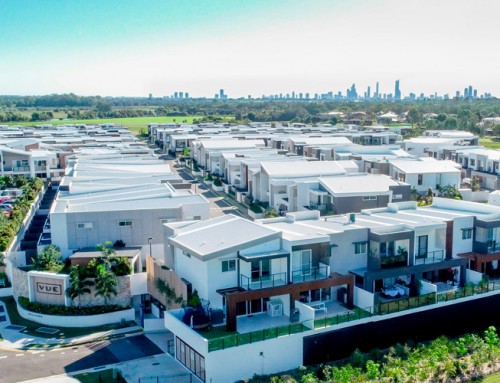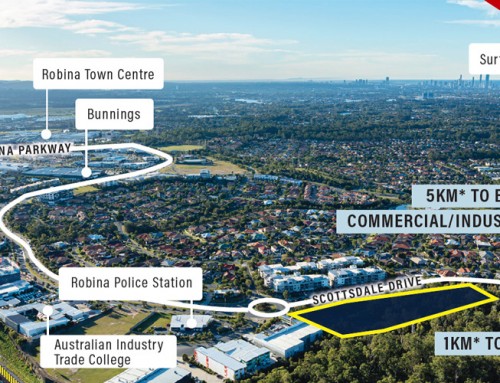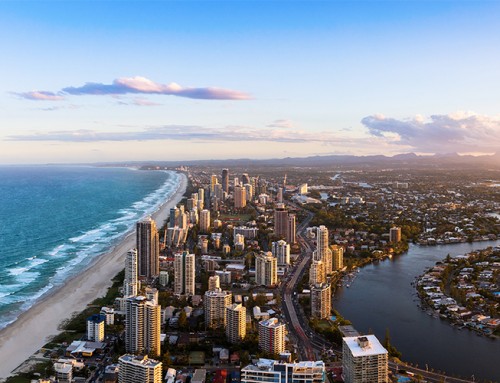Leading demographer Bernard Salt has intrigued, engaged and inspired the Gold Coast City community, rolling out an ambitious, insightful plan for the future vision of our unique beachside city at a sold-out TSS breakfast last week.
According to Bernard Salt, the core and constant value Gold Coast City has been growth and will continue to be over the next 35 years. Australia’s 6th largest city, the Gold Coast has grown from a collection of small villages in 1954 to a diverse urban hub of more than 600,000 people today.
Forecasting 35 years, Salt’s demographic analysis sees Gold Coast City and Tweed Heads combined population grow to over 1.2 million people in 2050.
According to Salt, focus must be on ‘sustainable city growth and development’ and as the population continues to grow, the city’s urban footprint will expand to accommodate this growth. Greenfields growth and development is expected to move into western areas like Robina, densifying the current urban footprint east of the Pacific Highway.
Chairman of Regional Development Australia, Craig Devlin concurred, speaking to ABC Gold Coast last Friday 13 February about Salt’s predicted densification into western regions.
According to Devlin, as our city grows, we must plan better, smarter models for housing to accommodate that growth, which moves away from high-rise housing, capitalising on people’s desire for a connected, community lifestyle.
The masterplanned community of Robina will be key to the future of Gold Coast City, not only contributing to the vision of affordable housing, but as one of the four major city centres.
According to City of Gold Coast ‘City Focus’, CBDRobina remains pivotal in the continued growth of the Gold Coast City economy, currently contributing $873 million to the local economy.
Robina Town Centre primarily makes up 19% of this value as part of the retail sector and as the most popular shopping destination in Gold Coast City, this world-class shopping and entertainment precinct is integral the growth of the urban centre of Robina and wider Gold Coast City.
According to Devlin, Salt’s findings from demographic analysis shows much less variability in the Gold Coast City economy than in decades past, which essentially means Gold Coast City is a great place to invest.
“Growth, entrepreneurial spirit and great lifestyle” are the key messages Devlin suggests will appeal to the business community to invest in Gold Coast City.
Salt emphasised Gold Coast City’s need to develop into a ‘knowledge economy’ and stressed key areas to cultivate for future growth are the healthcare and education sectors. Furthermore, Gold Coast City must develop connectivity and cohesiveness, with public transport featuring strongly in the vision for the city’s growth.
With a growing medical and research sector, including Robina Hospital, Robina Health Precinct and Bond University Institute of Health and Sport, Robina is emerging as a major health precinct within Gold Coast City.
Robina is also a public transport hub, offering unrivalled access and connectivity, with Robina Train Station offering a direct rail link to Brisbane in the north and Varsity Lakes in the south, as well as regular bus services and easy access to the M1 motorway, travelling both north and south.
With Future Gold Coast outlining plans to extend heavy rail link south to Coolangatta, CBDRobina will become even more accessible and connected to the entire surrounding region.
Characterised by ‘enterprise and energy’, Salt’s interpretation of Gold Coast City recognised the area as a popular destination for ‘Australian’s on the move’.
Movement and momentum are certainly on the cards, as our city prepares for significant growth as we implement the Future Gold Coast vision.
To access Bernard Salt’s report ‘Beyond the Horizon’ and to view the vision for Gold Coast City’s future, visit Future Gold Coast
Hear the discussion with Regional Development Australia’s Craig Devlin and Division 4 Councillor Marg Grummit about Bernard Salt’s vision for Gold Coast City, visit ABC Gold Coast – What will the Gold Coast look like in 2050?






